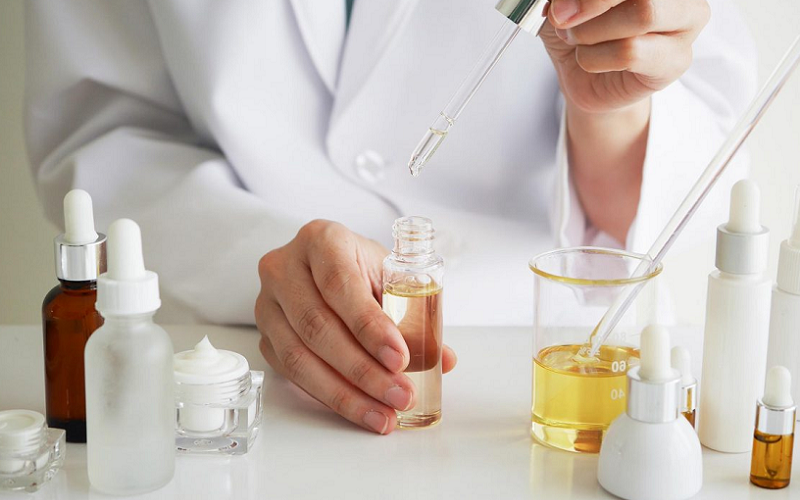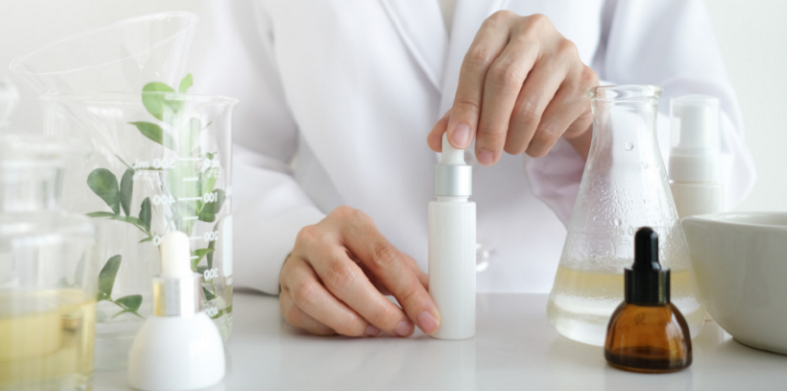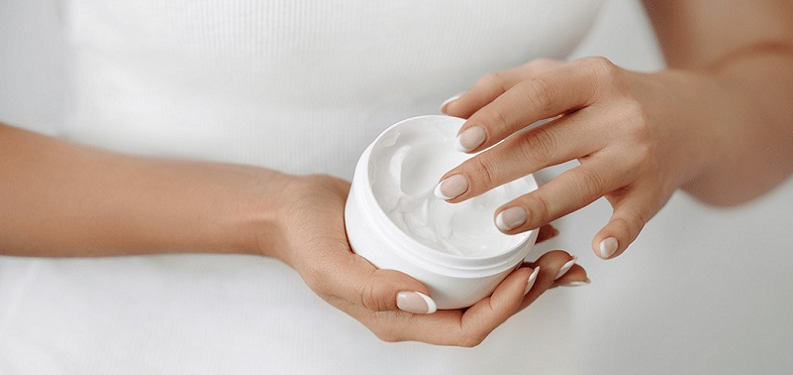
We’ve all seen the phrase ‘Dermatologist-Tested’ emblazoned across skincare products. It’s an assuring phrase, one that conjures images of lab-coated experts meticulously evaluating creams and serums. It makes us feel safe, like we’re making the smart choice for our skin. But what does ‘Dermatologist-Tested’ really mean? Is it a true indicator of product safety and efficacy, or is there more to it than meets the eye?
Contents
The History of ‘Dermatologist-Tested’ Labels
Before we delve into the intricacies of the ‘Dermatologist-Tested’ label, it’s important to understand how this claim became a part of the skincare vernacular. Knowing its origins and evolution will provide context to its current standing and help us evaluate its relevance today.
Origins of Dermatology Testing in Skincare
Dermatology as a specialized field of medicine has been around for over a century, but it wasn’t until the latter half of the 20th century that the skincare industry started capitalizing on the authority of dermatologists. As consumers grew more conscious of their health and appearance, there was an increased demand for products that were both effective and safe.
In response, skincare companies began consulting dermatologists during product development and testing phases. The term ‘Dermatologist-Tested’ first started appearing on skincare products as a means to instill confidence in consumers that the product had undergone rigorous testing under the supervision of skin experts.
Evolution of Consumer Perception
With time, the ‘Dermatologist-Tested’ label evolved into a powerful marketing tool. It played into the consumer’s desire for scientifically-backed products and was used to justify higher prices. This gave birth to the perception that products bearing this label were inherently superior to those that did not.
However, as the label became more ubiquitous, discerning consumers started questioning the validity and standardization of the testing methods behind these claims. The label, which was once a mark of quality, slowly became a source of skepticism for some consumers.
Regulations and Oversight
As the ‘Dermatologist-Tested’ label proliferated, regulatory bodies around the world started paying attention. Different countries established various standards and regulations regarding the use of this claim. In the United States, for example, the Food and Drug Administration (FDA) does not have a standard definition for the term ‘Dermatologist-Tested’.
The agency does, however, require that any claim made on a cosmetic label should not be false or misleading. In the European Union, the regulations are more stringent, with cosmetics having to comply with the EU Cosmetics Regulation, which demands a higher level of accountability and disclosure [1].
The different approaches to regulations globally have contributed to the vagueness and inconsistency of the ‘Dermatologist-Tested’ label, making it even more important for consumers to be well-informed.

The Science Behind Skincare and Dermatology
To truly grasp the significance of the ‘Dermatologist-Tested’ label, it’s essential to have a foundational understanding of the science behind skincare and dermatology. By recognizing how the human skin functions and the common issues it faces, we can better appreciate the role of skincare products and the importance of dermatological input in their formulations.
The Human Skin – Basics and Functionality
The human skin is the largest organ of the body and serves as the first line of defense against external aggressors like bacteria, pollutants, and ultraviolet radiation. It consists of three primary layers: the epidermis (outer layer), the dermis (middle layer), and the hypodermis (innermost layer). Each layer has a unique composition and set of functions [2].
- The epidermis is responsible for producing new skin cells, and it contains melanin, which determines the skin color.
- The dermis contains connective tissues, hair follicles, and sweat glands. It is instrumental in the skin’s elasticity and strength.
- The hypodermis consists mainly of fat and connective tissue and acts as an insulator and shock absorber.
Skincare products interact mainly with the epidermis, and understanding its properties is crucial in comprehending how these products affect the skin.
Common Skin Issues and the Role of Skincare Products
Various factors such as genetics, environmental pollutants, lifestyle choices, and aging can lead to skin issues. Some common skin issues include acne, dryness, sensitivity, wrinkles, and hyperpigmentation. Skincare products are formulated to address these issues by providing the skin with essential nutrients, hydration, and protection.
For example:
- Moisturizers work by reducing water loss and providing hydration to the skin.
- Sunscreens protect the skin from harmful UV rays which can cause premature aging and skin cancers.
- Exfoliants help remove dead skin cells, allowing for better absorption of other products and a brighter complexion.
- Anti-aging creams usually contain ingredients like retinol that promote collagen production, improving the skin’s elasticity and reducing wrinkles.
The Importance of Dermatological Input in Skincare Formulations
Dermatologists specialize in the study of skin, hair, nails, and mucous membranes. Their expertise is essential in understanding the complexities of skin health and in developing effective skincare products. With the knowledge of skin types, conditions, and the interactions between different ingredients, dermatologists can provide valuable insights into what ingredients and formulations are likely to be effective and safe.
Furthermore, dermatologists are equipped to perform and interpret clinical tests, which can assess a product’s efficacy and potential for causing irritation or allergies. This scientific and medical expertise is crucial in ensuring that skincare products are formulated in a way that is beneficial to the health of the skin [3].

Understanding the ‘Dermatologist-Tested’ Claim
Having gained insights into the science behind skincare and dermatology, it is now crucial to deconstruct the ‘Dermatologist-Tested’ label.
What Does ‘Dermatologist-Tested’ Really Mean?
On the surface, the ‘Dermatologist-Tested’ label implies that the product has undergone testing or evaluation by a dermatologist. However, the claim is ambiguous and can be interpreted in various ways. It might mean that a dermatologist was involved in the development phase, that the product was subjected to clinical trials under a dermatologist’s supervision, or that it was merely reviewed and approved by a dermatologist post-production. The lack of standardization in the usage of this term leaves room for interpretation and can sometimes mislead consumers into thinking that the product has undergone more rigorous testing than it actually has [4].
Variability in Testing Methods
Even when a product is tested by dermatologists, the methods employed can vary widely. Some common dermatological tests include:
- Patch testing: Applying the product to a small area of the skin to observe if any allergic reactions occur.
- Use testing: Having individuals use the product as intended over a period of time and reporting any adverse reactions.
- Laboratory testing: Conducting tests in a controlled environment to assess the product’s properties and effects on the skin.
The stringency and comprehensiveness of these tests can differ significantly. A product might undergo thorough clinical trials for several months or be subject to a basic evaluation over a few days.
The Role of Dermatologists in Product Testing
The extent of involvement of dermatologists in product testing is another gray area. In some instances, dermatologists are actively engaged in formulating and testing the product. In other cases, their involvement might be limited to a cursory review. Without additional information on the nature of their participation, the ‘Dermatologist-Tested’ claim doesn’t offer much clarity on the actual contribution of the dermatologist in ensuring the product’s efficacy and safety [5].
Differentiating Between ‘Dermatologist-Tested’ and ‘Dermatologist-Recommended’
It’s also important to differentiate between ‘Dermatologist-Tested’ and ‘Dermatologist-Recommended’. While the former implies that the product underwent some form of dermatological testing, the latter suggests that the product is endorsed or recommended by dermatologists. However, similar to the ‘Dermatologist-Tested’ claim, the ‘Dermatologist-Recommended’ claim can also be vague, as it does not specify the number or the credentials of the dermatologists who recommended it.

Cosmetics Labeling Misconceptions and Marketing Ploys
As we’ve established, the ‘Dermatologist-Tested’ label can be vague and open to interpretation. However, many consumers are not aware of this ambiguity and may harbor certain misconceptions. Additionally, some companies exploit these misconceptions through marketing ploys.
Assumed Safety of ‘Dermatologist-Tested’ Products
One of the most prevalent misconceptions is that if a product is ‘Dermatologist-Tested’, it must be safe for all skin types and free from adverse effects. However, as previously discussed, the extent and rigor of testing can vary significantly. Furthermore, even the most comprehensive testing cannot guarantee that a product will be suitable for everyone, as individuals may have unique sensitivities or allergies [6].
Misleading Packaging and Advertisements
Marketers often use the ‘Dermatologist-Tested’ label prominently on packaging and advertisements to create an aura of scientific validity and safety. The label is often accompanied by technical jargon or scientific images that might not have any substantial relation to the product’s efficacy. This practice can lead consumers to make assumptions about the product based solely on marketing materials, without critically evaluating the ingredients or other pertinent information.
Consumer Bias Toward Medical Authority
The ‘Dermatologist-Tested’ label also plays into a psychological bias where consumers tend to trust information and products associated with medical authority. By associating a skincare product with dermatologists, companies tap into the consumer’s inherent trust in medical professionals. This can sometimes overshadow the consumer’s own judgment or deter them from seeking more information.
References
[1] What’s the Difference Between Dermatologist-Tested & Dermatologist-Approved?
[2] A Guide to Understanding Beauty Label Lingo, From ‘Hypoallergenic’ to ‘Clinically Tested’
[3] An expert decodes skincare labels so you don’t have to
[4] What Do Things Like “#1 Doctor Recommended” or “Dermatologist Recommended” Actually Mean?
[5] 5 Skin Myths That Need to Be Cleared Up, According to Dermatologists
[6] Consumer Preferences, Product Characteristics, and Potentially Allergenic Ingredients in Best-selling Moisturizers
